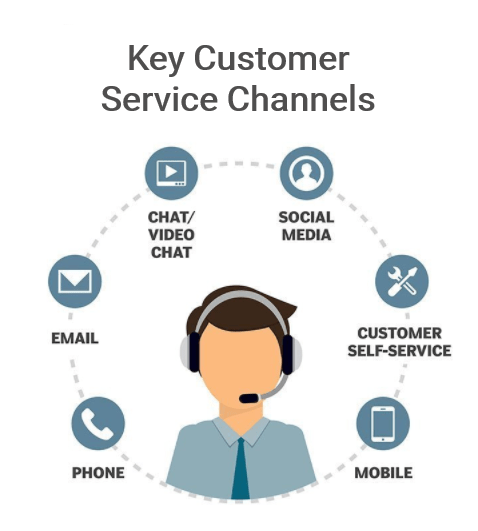Table of Contents
» What is a Customer Service Channel?

» How Customer Service Channels Contribute to Top-Notch Support?
› Meeting customers where they are
› Faster resolution times
› Personalized experiences
› Building stronger relationships
» Major Types Of Customer Service Channels

› 1) Phone Support
› 2) Email Support
› 3) Live Chat

› 4) Social Media
› 5) Self-Service Portals and FAQs
› 6) Messaging Apps (e.g., WhatsApp, Facebook Messenger)
› 7) Video Chat
» Creating an Effective Customer Service Channel Strategy
› Tip #1. Know Your Customers Inside and Out
- Conducting surveys: Conduct a survey and ask your customers directly which channels they prefer and why.
- Analyzing customer data: Dive into your website analytics, CRM data, and social media insights to identify trends in customer interactions.
- Creating buyer personas: Develop detailed profiles of your ideal customers, including their demographics, pain points, and communication styles.
- Segmenting by channel preference: Group customers based on their preferred channels (phone, email, chat, etc.) so you can tailor your approach to each segment.
› Tip #2. Align Channels with Your Business Goals
- Mapping channel strengths to inquiry types: Define which issues are best suited for each channel, such as live chat for general inquiries and phone support for complex cases.
- Defining an escalation process: Define a clear path for shifting customers from primary channels to more in-depth support if needed.
- Considering your industry: Research best practices in your industry to see which channels are most commonly used and effective.
› Tip #3. Offer Omnichannel Excellence

- Investing in customer engagement software: Choose a platform that allows you to manage all your channels in one central location.
- Training your team for multi-tasking: Ensure your support staff is equipped to handle inquiries across multiple channels effectively.
- Ensuring consistent brand voice: Ensure every support team member understands and maintains your brand’s tone and style, whether they’re on live chat or social media.
- Monitoring response times: Set channel-specific response time goals and use software to track them so every channel remains responsive and reliable.
- Personalizing interactions: Use customer data to provide consistent and personalized support, regardless of the channel.
› Tip #4. Use Data to Refine Your Channel Strategy
- Monitor trends in customer support: Regularly review industry trends and changes in customer behavior to spot new channel opportunities.
- Analyze interaction volume and resolution times: Identify which channels are handling the most inquiries and how quickly issues are resolved.
- Update channels and tools: Be open to incorporating new channels or tools if they help you meet customer needs more effectively.
- Optimize based on insights: Leverage data to tweak your channel strategy, adding or adjusting channels where needed to ensure you’re providing the best possible support.
› Tip #5. Adapt to Evolving Customer Expectations
- Seek feedback: Periodically ask customers how they feel about your support channels to identify any gaps or areas for improvement.
- Embrace new technologies: Explore emerging channels and technologies, such as conversational AI, virtual assistants, and augmented reality, to see how they can enhance your support offerings.
- Update channels and tools: Consider incorporating new channels or tools if they help you meet customer needs more effectively.



